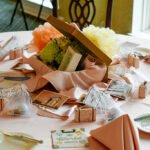
In a world where personalizing your living space is more important than ever, DIY projects have become a go-to option for homeowners looking to add a unique touch to their homes. Whether you’re aiming to redecorate a room, create custom furniture, or update your landscaping, DIY projects offer a fun and cost-effective way to achieve exactly what you want. With a little time, effort, and creativity, you can transform your home into a personalized sanctuary. However, the thought of taking on a project can sometimes feel daunting, especially if you’re not sure where to start.
Fear not! In this post, we’ll break down several easy-to-follow step-by-step tutorials that will guide you through various DIY home projects. From simple decor ideas to more intricate furniture builds, these tutorials will ensure that you have the skills and confidence to take on any DIY challenge. Let’s get started with these beginner-friendly and rewarding home projects.
1. Create a Custom Floating Shelf
Floating shelves are a fantastic way to add both storage and visual appeal to a room. They give your space a modern, sleek look while being incredibly functional. Building your own floating shelf is easier than it might seem, and it allows you to tailor the size and style to your specific needs.
Materials You’ll Need:
- Wooden board (choose the size and thickness that fits your space)
- L-brackets or shelf brackets
- Screws
- Drill
- Measuring tape
- Sandpaper or power sander
- Paint or wood stain (optional)
Step-by-Step Instructions:
- Measure the Space: Before buying materials, measure the length and height of the wall area where you want to install your shelf. This will help you determine the size of the wood board you need.
- Cut the Wood: If you don’t have pre-cut wood, use a saw to cut the board to the appropriate size. Sand the edges smooth to eliminate any rough spots.
- Attach the Brackets: Measure and mark where you want the brackets to go on the wall. Use a level to ensure they’re straight. Screw the brackets into the wall studs to provide maximum support.
- Install the Shelf: Once the brackets are securely attached, place the wood board onto the brackets and fasten it with screws from underneath.
- Finish the Shelf: If desired, finish the shelf with paint or wood stain to complement your room’s decor. Allow it to dry completely before placing any items on top.
Floating shelves add an elegant touch to your home, perfect for displaying books, plants, or art. They are versatile and can be installed in any room, from the living room to the bathroom.
2. Transform Old Furniture with a Fresh Coat of Paint
Upcycling old furniture is one of the most satisfying DIY projects you can take on. By simply adding a fresh coat of paint or stain, you can make your old furniture look brand new. Not only does this breathe new life into pieces you already own, but it also saves money compared to purchasing new furniture.
Materials You’ll Need:
- Old piece of furniture (a dresser, table, chair, etc.)
- Sandpaper or electric sander
- Primer (if needed)
- Paint (chalk paint, spray paint, or regular paint)
- Paintbrush or roller
- Clear polyurethane (for protection)
- Painter’s tape
Step-by-Step Instructions:
- Prepare the Furniture: Start by removing any hardware, like knobs, handles, or hinges. Use sandpaper to smooth the surface and remove any existing finish. If the piece is particularly worn, consider using an electric sander for faster work.
- Clean the Furniture: Wipe down the furniture to remove any dust, dirt, or residue from the sanding process. A clean surface ensures better paint adhesion.
- Apply Primer (If Needed): If you’re painting over a dark color or a glossy finish, apply a coat of primer to help the paint adhere better and provide even coverage.
- Paint the Furniture: Apply your chosen paint color in thin, even coats. Allow each coat to dry fully before applying another. Depending on the paint and color, you may need 2-3 coats.
- Protect the Finish: Once the paint is completely dry, apply a clear polyurethane finish to protect the surface from scratches, stains, and general wear.
- Reattach Hardware: Once the protective coat has dried, reattach the hardware, and your upcycled furniture is ready to go.
This simple transformation will not only give new life to your furniture but will also help you create a cohesive, personalized aesthetic in your home. The best part is that you can choose any color or finish that suits your style.
3. Make a Cozy Macramé Wall Hanging
Macramé is a versatile and creative technique of knotting cords to create beautiful, textured pieces of art. A macramé wall hanging is a fantastic way to add boho-chic vibes to any room in your home. This step-by-step tutorial will guide you in making a simple yet stunning wall hanging.
Materials You’ll Need:
- Macramé cord (about 3mm thickness)
- A wooden dowel or branch
- Scissors
- Measuring tape
- Optional: Beads, feathers, or decorative elements
Step-by-Step Instructions:
- Cut the Cord: Cut several lengths of macramé cord. The length will depend on how long you want the finished piece to be, but cutting about 12-15 cords that are approximately 3-4 feet long is a good starting point.
- Attach the Cord to the Dowel: Fold each piece of cord in half and use a lark’s head knot to attach the cords to the wooden dowel or branch. This will give you a uniform foundation to start your design.
- Start Knotting: Using various macramé knots (such as square knots and half knots), begin creating the design you want. The easiest way to start is by creating a series of knots in rows. As you progress, you can experiment with more intricate patterns or even incorporate beads or feathers for added texture.
- Trim and Shape: Once you’re happy with your design, trim the bottom of the hanging to your desired length. You can leave it as a sharp edge or create a fringe effect by unraveling the ends of the cord.
- Hang the Piece: Once the wall hanging is complete, tie a piece of cord around the top of the dowel to hang it securely from a hook or nail.
Macramé wall hangings are a fantastic way to add texture and warmth to a space, and they work wonderfully in living rooms, bedrooms, or entryways.
4. Build a Simple Pallet Coffee Table
Pallet furniture is all the rage these days, and for good reason—it’s inexpensive, versatile, and easy to build. By repurposing wooden pallets, you can create a unique coffee table that suits your home’s style.
Materials You’ll Need:
- 2-3 wooden pallets (depending on size)
- Sandpaper or sander
- Paint or wood stain
- Casters (optional for mobility)
- Screws and screwdriver
- Wooden slats or glass (optional for the table surface)
Step-by-Step Instructions:
- Prepare the Pallets: Start by cleaning and sanding the pallets to remove any rough edges and splinters. If the wood is weathered, you may want to sand it down for a smoother finish.
- Stack the Pallets: Depending on the height you want for your coffee table, stack the pallets on top of each other. You can stack them in a single row or use two stacked pallets for a taller table.
- Secure the Pallets: Use screws to attach the pallets together. This will create a sturdy base for your table.
- Add a Table Surface: If you prefer a flat surface, you can add a wooden slat top or even a piece of glass to the pallet stack. Attach it securely with screws.
- Paint or Stain: Paint or stain the entire table to match your room’s aesthetic. For a rustic look, a wood stain works well, while a bright paint color can add a pop of personality.
- Add Casters: If you want a mobile coffee table, attach casters to the bottom of the pallets for easy movement.
This DIY pallet coffee table is a simple yet stylish way to introduce a bit of industrial charm into your living room. Plus, you can customize it to your exact needs and preferences.
5. Create a Beautiful Indoor Herb Garden
If you love cooking with fresh herbs, having an indoor herb garden can be a game changer. Not only does it allow you to have fresh ingredients at your fingertips, but it also adds a lovely natural touch to your kitchen or living space.
Materials You’ll Need:
- Small pots or containers
- Potting soil
- Herb seeds or starter plants (such as basil, parsley, rosemary, thyme)
- A tray to catch excess water (optional)
Step-by-Step Instructions:
- Choose Your Herbs: Start by selecting herbs that you regularly use in cooking. Some great options for beginners include basil, mint, thyme, rosemary, and cilantro.
- Prepare the Pots: Fill each pot with potting soil, leaving about an inch of space at the top. Make sure the containers have drainage holes to prevent overwatering.
- Plant the Herbs: Sow the herb seeds in each pot according to the package instructions. If you’re using starter plants, gently remove them from their original containers and place them in the new pots.
- Place in a Sunny Spot: Herbs need a lot of light, so place them in a sunny spot, such as a windowsill or balcony. Ensure they get at least 4-6 hours of sunlight each day.
- Care for Your Herbs: Water your herbs as needed, ensuring that the soil stays moist but not soggy. Trim your herbs regularly to encourage new growth and prevent them from becoming leggy.
An indoor herb garden not only brings freshness and flavor to your cooking but also adds greenery and life to your space. Plus, it’s an easy-to-maintain project that anyone can enjoy.
Conclusion:
DIY projects are an exciting way to put your creativity to the test and personalize your home. Whether you’re building floating shelves, painting old furniture, creating a macramé wall hanging, or starting an indoor herb garden, these projects offer endless opportunities to showcase your skills and make your home uniquely yours. By following simple step-by-step tutorials, you can complete these projects with ease, turning your living space into a beautiful and functional environment. So, grab your tools, get inspired, and dive into your next DIY project—you’ll be amazed at what you can create!








